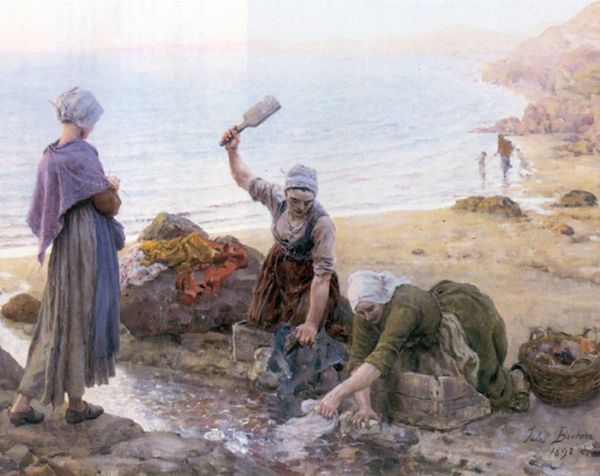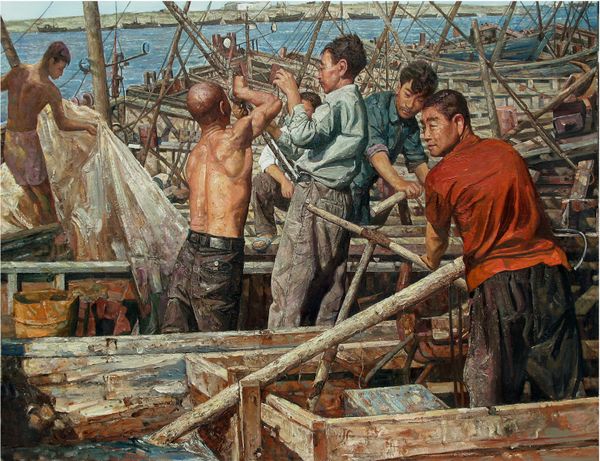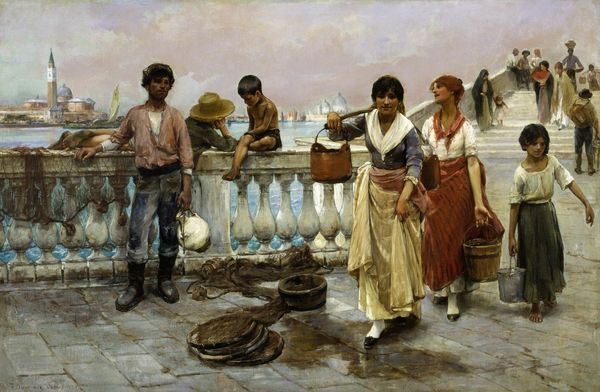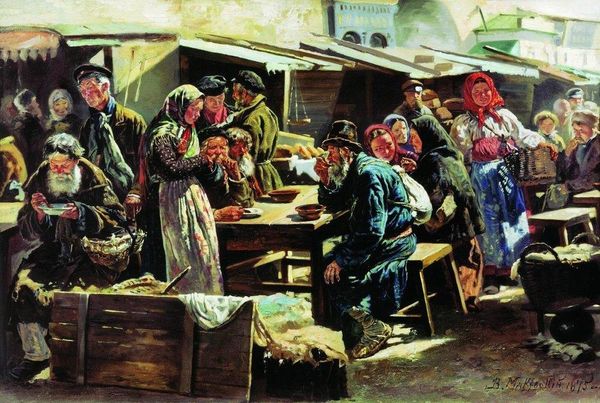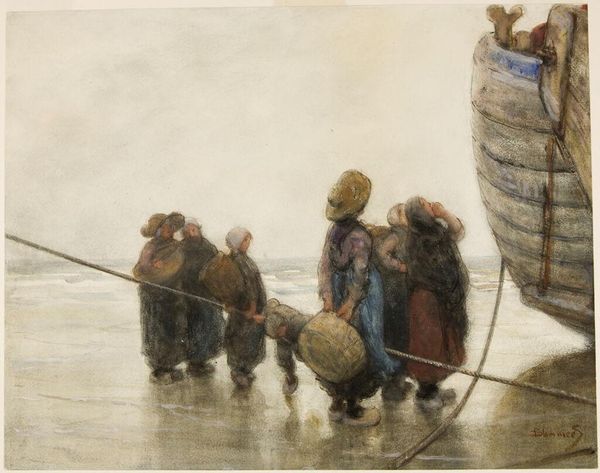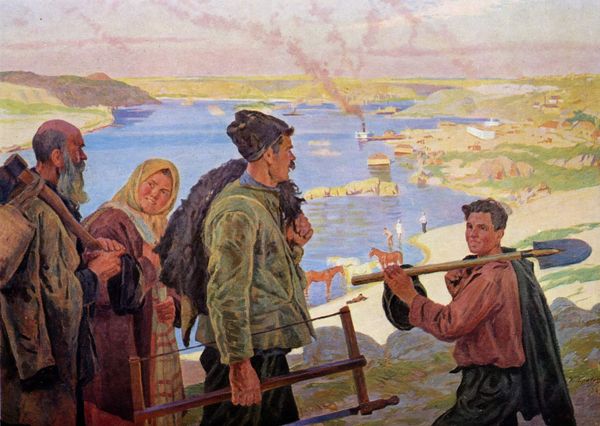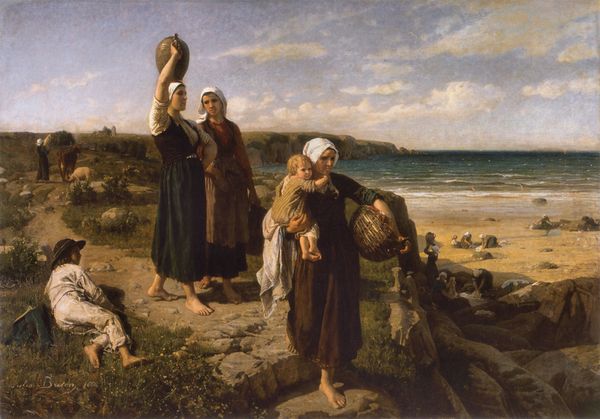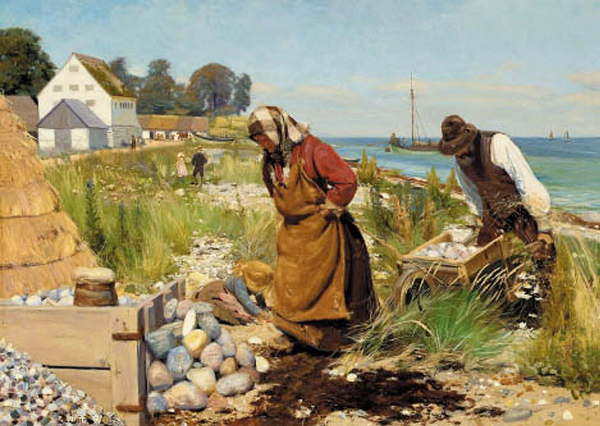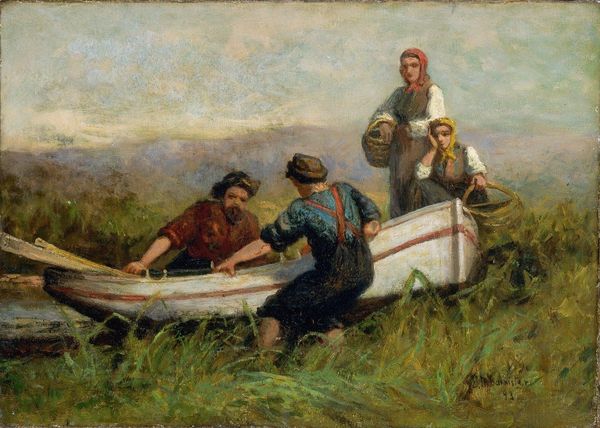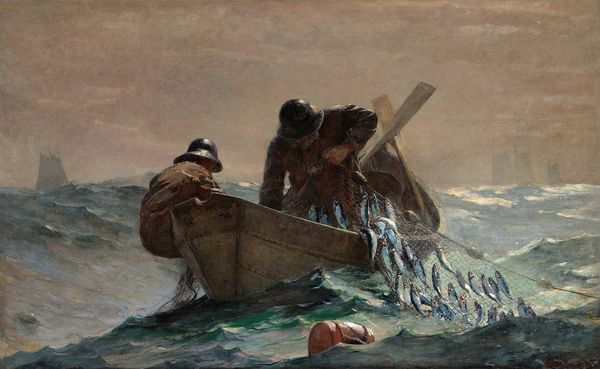
plein-air, oil-paint
#
impressionism
#
plein-air
#
oil-paint
#
landscape
#
oil painting
#
genre-painting
#
realism
Copyright: Public domain
Curator: Peder Severin Krøyer's “Women and Fishermen of Hornbaek,” painted in 1875, captures a slice of life on the Danish coast. The scene unfolds on the beach, showing figures focused on the day’s catch. Editor: My initial impression is of quiet labor and the somber, almost gray tonality. It really speaks to the hardships of daily life for these working-class families. Curator: Exactly. Krøyer was part of a generation of artists who aimed to depict the everyday realities of ordinary people. We should contextualize this within the rise of Realism in European art, which challenged academic traditions by portraying contemporary subjects, and specifically, manual labor. Editor: It feels almost like an anthropological study, doesn’t it? I mean, look at the gendered division of labor being represented; men hauling the boat in, the women processing the fish. How do you think this piece might speak to feminist critiques of labor and representation? Curator: It certainly reflects prevailing social structures, yes. Krøyer documented what he observed. His art humanizes figures usually left out of the mainstream artistic dialogue. These women and men become individualized through their labor. Krøyer isn't necessarily advocating, but documenting their integral part in Danish society, reflecting a sense of national identity at the time. Editor: Still, the absence of idealization, combined with this focus on repetitive toil, leaves room for a more critical reading. Are these figures romanticized or are they portrayed with empathy acknowledging socio-economic disadvantages? Curator: The subtle gradations of light, those fleeting impressionistic effects, highlight Krøyer’s sensitivity. His palette lends the scene a feeling of quiet dignity. Editor: Ultimately, viewing a scene like this forces a confrontation with labor’s human element and its costs, perhaps in a way that’s far more potent than outright social critique might have achieved. It serves to acknowledge this part of Denmark's past. Curator: Indeed. By engaging with those past moments, this oil painting stimulates dialogues on how we comprehend and confront representations of societal disparities through art. Editor: It also reminds us that looking at art, it can provide insight to how cultural memory and social analysis shape both history and the present day.
Comments
No comments
Be the first to comment and join the conversation on the ultimate creative platform.
